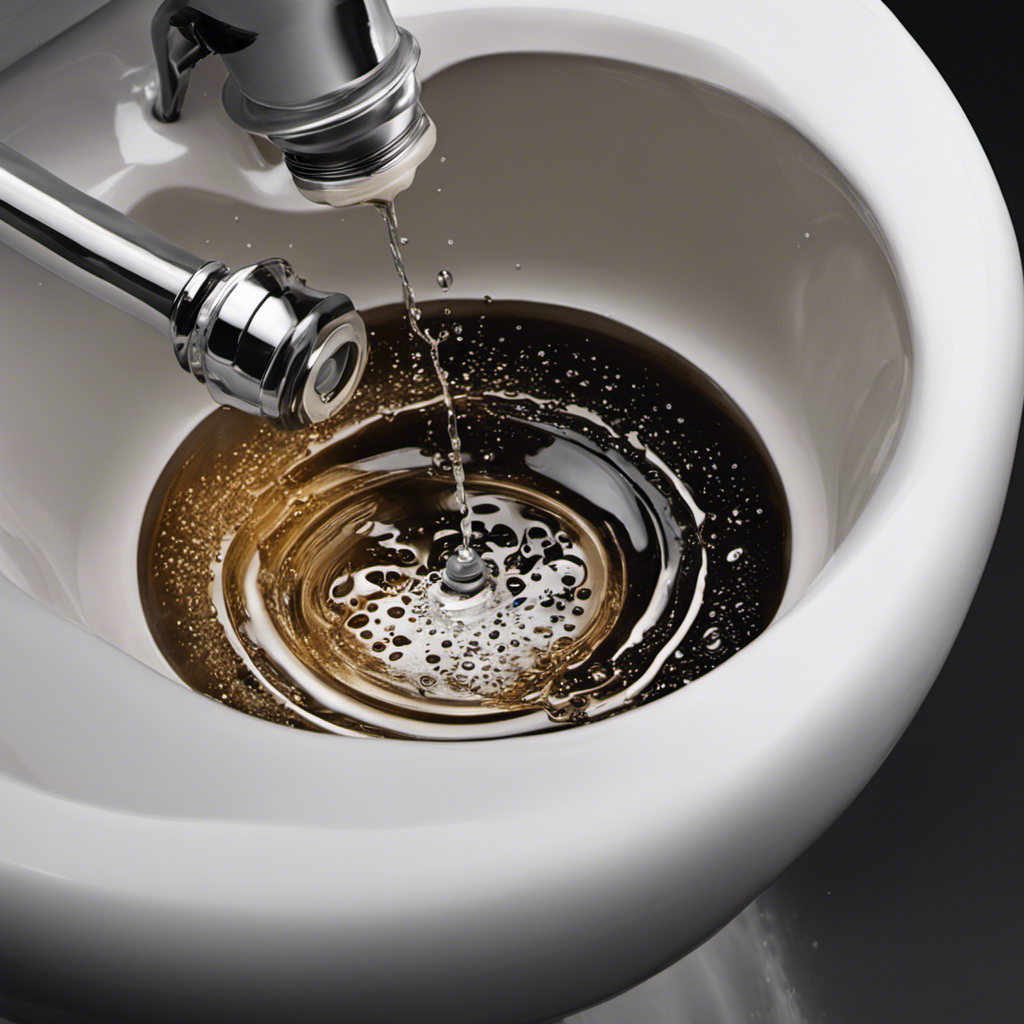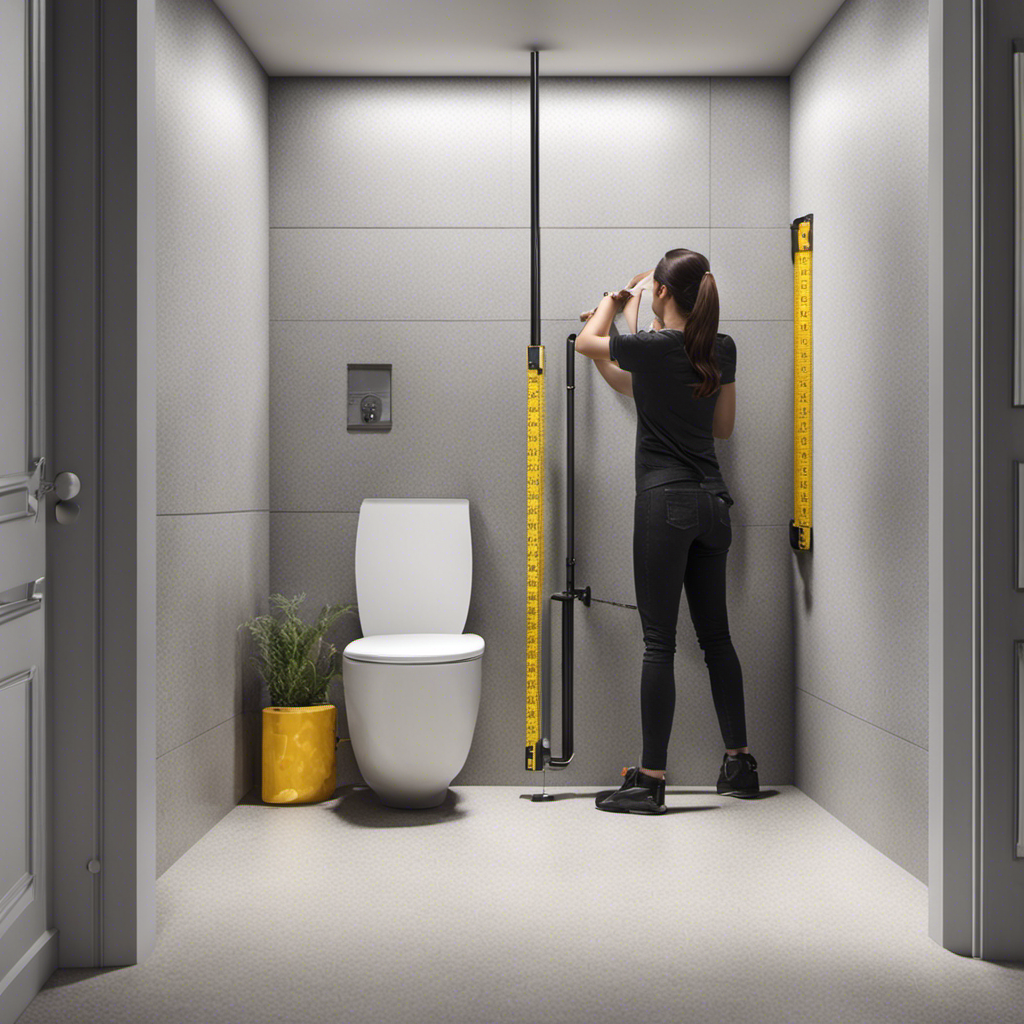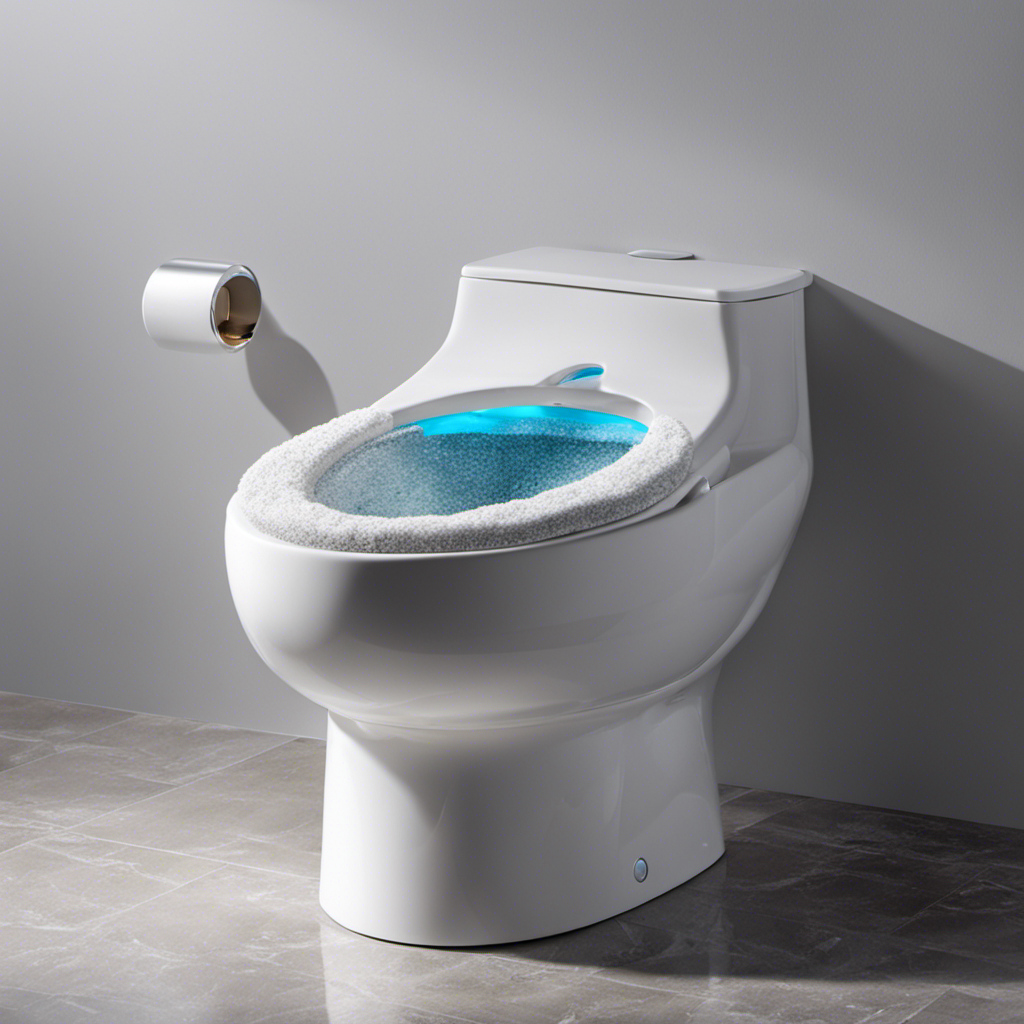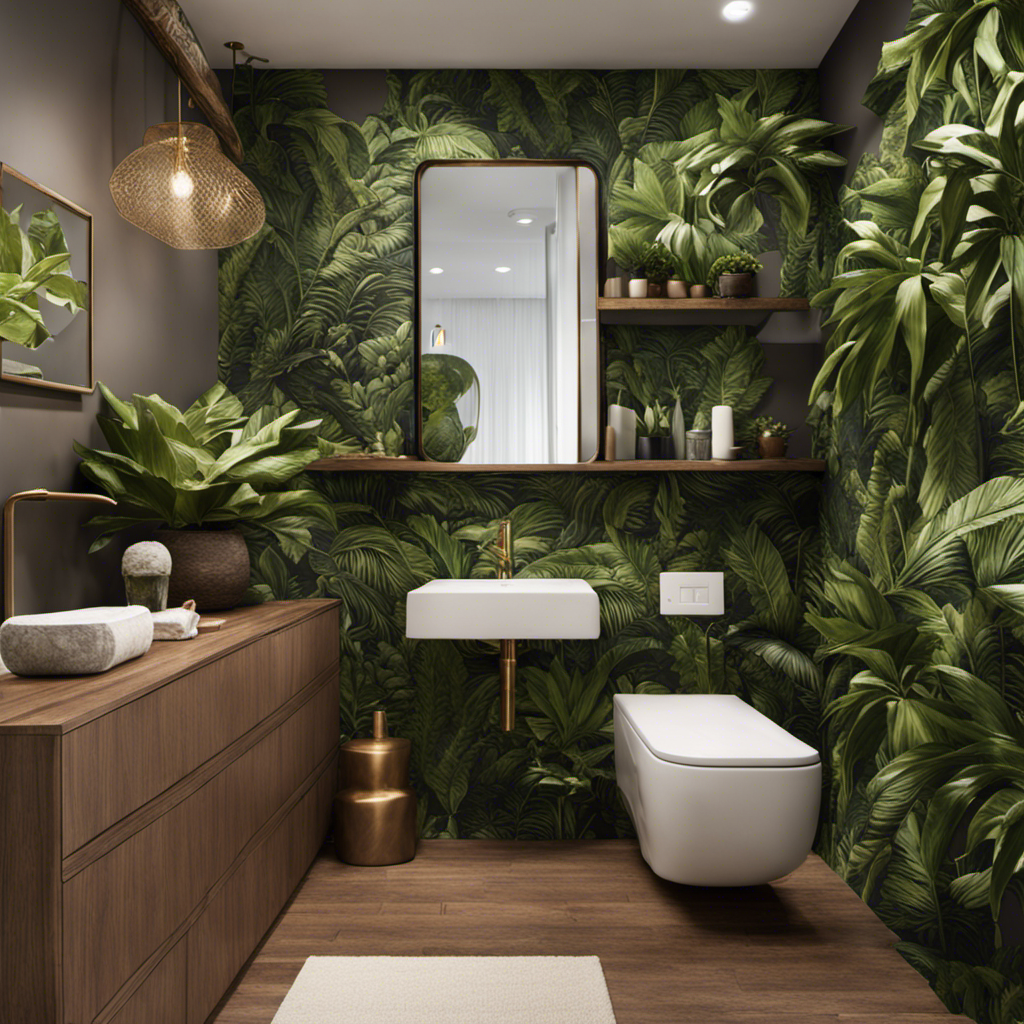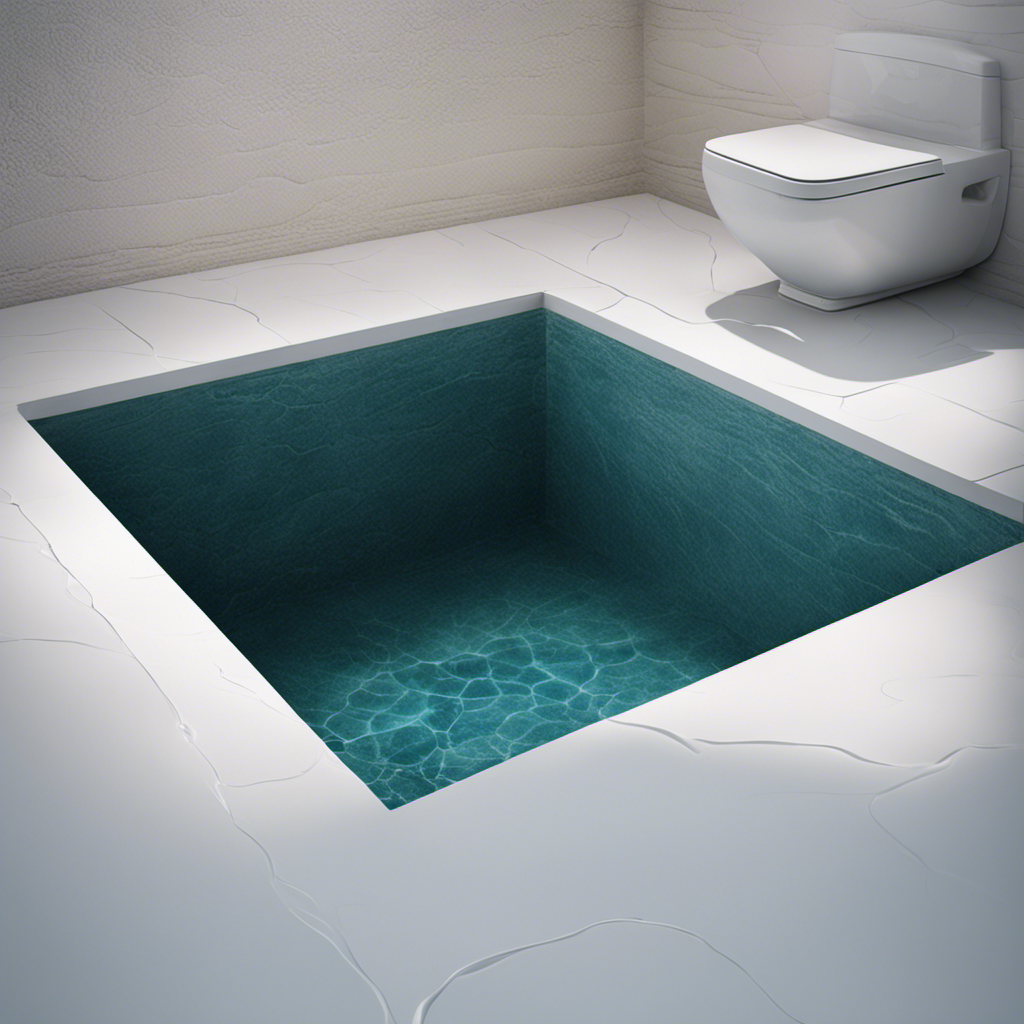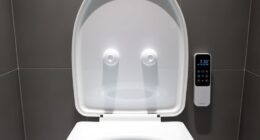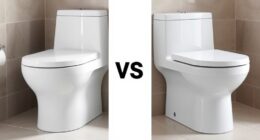Hey there!
Having a clogged toilet can be a frustrating and messy situation. But fear not, because I’ve got you covered. In this article, I’ll walk you through step-by-step instructions on how to fix a clogged toilet using simple tools like a plunger and a toilet auger.
I’ll also share alternative methods to unclog without a plunger, and some handy tips to prevent future clogs.
So let’s dive in and get your toilet back to its sparkling clean state!
Key Takeaways
- The tools needed for fixing a clogged toilet include a plunger, toilet snake, chemical drain cleaner, bucket, and wrench.
- The first step to unclog a toilet using a plunger is to firmly place the plunger over the drain hole and create suction by rapidly pushing and pulling.
- If plunging doesn’t work, it is recommended to call a professional plumber.
- Alternative methods to unclog a toilet without a plunger include using toilet paper, pouring boiling water, using natural drain cleaners, or using a plumbing snake.
Tools Needed for Fixing a Clogged Toilet
You’ll need a plunger to fix a clogged toilet. In addition to a plunger, there are a few other tools that can come in handy when dealing with a stubborn clog.
One such tool is a toilet snake, which is a flexible rod that can be inserted into the toilet drain to dislodge the blockage.
Another option is a chemical drain cleaner, which can be poured into the toilet bowl and left to work its magic. However, it’s important to use these chemicals with caution and follow the instructions carefully, as they can be harmful if not used properly.
Now that we have the necessary tools, let’s move on to the step-by-step guide to unclog a toilet using a plunger.
Step-By-Step Guide to Unclog a Toilet Using a Plunger
Start by firmly placing the plunger over the drain hole and rapidly push and pull to create suction and dislodge the obstruction.
Here are some common mistakes to avoid when using a plunger for unclogging a toilet:
-
Not using enough water: Ensure there is enough water in the bowl to cover the plunger’s rubber cup. This creates a better seal and increases the effectiveness of the plunging action.
-
Using too much force: While it’s important to exert some pressure, using excessive force can damage the toilet or cause water to splash out. Apply steady and controlled pressure instead.
-
Not plunging correctly: Make sure the plunger is perpendicular to the drain hole and create a tight seal. Avoid pushing down too forcefully as this can break the seal and reduce suction.
-
Ignoring warning signs: If plunging doesn’t solve the problem after a few attempts or if you notice water backing up or strange noises, it’s time to call a professional plumber. They have the expertise and tools to tackle more severe clogs and prevent further damage.
Using a Toilet Auger to Clear a Stubborn Clog
Using a toilet auger can effectively clear stubborn clogs by breaking up the obstruction and allowing it to be flushed away. This tool, also known as a plumbing snake, is a practical and efficient solution for dealing with tough toilet clogs.
One of the main benefits of using a toilet auger is its ability to reach deep into the drain pipe and dislodge the blockage. The auger’s flexible cable can navigate around bends and curves, ensuring that the entire clog is cleared.
However, there are common issues that may arise when using a toilet auger. One troubleshooting tip is to make sure the auger is inserted correctly and securely into the toilet bowl. Additionally, applying too much force could damage the porcelain, so it’s important to use gentle, steady pressure when operating the auger.
Overall, a toilet auger is a reliable tool for clearing stubborn clogs and maintaining a functioning toilet.
Alternative Methods to Unclog a Toilet Without a Plunger
There are several alternative methods to unclog a toilet without a plunger that can be effective in resolving the issue. Here are some options to consider:
-
Using a toilet paper alternative: If you don’t have a plunger on hand, you can try using a thick wad of toilet paper as an alternative. Simply place the toilet paper in the toilet bowl and let it soak up the water. Then, use a gloved hand to gently push and pull the toilet paper to create suction and dislodge the clog.
-
Using hot water: Boiling a pot of hot water and pouring it directly into the toilet bowl can help break up a clog. The hot water can dissolve the materials causing the blockage and allow them to flow freely down the drain.
-
Using natural drain cleaners: There are several natural drain cleaners available that can help break down clogs. Ingredients such as baking soda, vinegar, and lemon juice can be combined and poured into the toilet bowl. Let the mixture sit for a while before flushing to see if it clears the clog.
-
Using a plumbing snake: A plumbing snake, also known as a drain auger, can be used to manually clear the clog. Insert the snake into the toilet drain and twist it to break up the obstruction. Then, flush the toilet to see if the clog has been resolved.
Tips for Preventing Future Toilet Clogs
To prevent future clogs, it’s essential to be mindful of what you flush down the toilet. Regular toilet maintenance is crucial for avoiding costly repairs and inconveniences.
One of the most common causes of toilet clogs is flushing excessive amounts of toilet paper or non-flushable items such as wipes, dental floss, or feminine hygiene products. To avoid this, remember to only flush toilet paper and waste.
Another common cause is a buildup of mineral deposits or debris in the pipes. To prevent this, consider using a toilet bowl cleaner regularly and avoid pouring grease or oil down the drain.
Lastly, ensure that your toilet is properly fitted with a flapper valve and a fill valve to prevent water overflow. By following these simple tips, you can keep your toilet running smoothly and avoid future clogs.
Frequently Asked Questions
How Do I Know if My Toilet Is Clogged?
Well, if my toilet isn’t flushing properly, that’s usually a sign it’s clogged. Other signs include water rising or not draining at all. There are ways to unclog a toilet without a plunger, too.
Can I Use a Regular Plunger to Unclog a Toilet?
Yes, you can use a regular plunger to unclog a toilet. However, if that doesn’t work, there are alternative methods like using a toilet auger or seeking professional help for more stubborn clogs.
What Should I Do if the Plunger Doesn’t Work?
If the plunger doesn’t work, there are alternative methods to try. You could use a toilet auger or a drain snake. If all else fails, it’s time to call a plumber.
Is It Safe to Use Chemical Drain Cleaners to Unclog a Toilet?
Using chemical drain cleaners to unclog a toilet is not safe. It can damage the pipes and release harmful fumes. Instead, try alternative methods like using a plunger, a toilet auger, or a mixture of hot water and dish soap.
Can I Use a Wire Hanger as an Alternative Method to Unclog a Toilet?
Using a wire hanger may be an alternative method to unclog a toilet. It’s a common household item that can help loosen blockages. However, be careful not to damage the porcelain.
Conclusion
In conclusion, fixing a clogged toilet can be a simple task that anyone can do with the right tools and techniques. By using a plunger or a toilet auger, you can quickly and effectively remove the clog and restore your toilet’s functionality.
However, it’s important to note that prevention is key in avoiding future clogs. Did you know that according to a survey, around 75% of toilet clogs are caused by excessive toilet paper usage? So, remember to use only the necessary amount to keep your toilet running smoothly.
